By Marla Keene, technology writer, AX Control
U.S. adoption of offshore wind technology has been slow compared to European counterparts. Europe’s first offshore wind installation, Denmark’s Vindeby, came online in 1991 with a capacity of 4.9 MW. The U.S. National Renewable Energy Laboratory (NREL) has estimated that the winds off U.S. coasts could generate four-times the electricity the country needs. Yet two decades after that first offshore project in Denmark, Europe had eight operational offshore wind farms while the United States had none.
As late as 2020, Rhode Island’s Block Island Wind Farm was still the United States’ only commercial operating offshore wind installation, which came online in 2016. A small pilot project has become active off the coast of Virginia. Roughly 30 other projects remain in various forms of development.
Several factors play into this difference between EU and U.S. markets. The permitting web reaching across U.S. government agencies, including the Bureau of Ocean Energy Management (BOEM), the National Oceanic and Atmospheric Administration (NOAA), the U.S. Army Corps of Engineers and the Fish and Wildlife Service, is one factor. Projects must plan how to limit environmental impacts on surroundings and on local wildlife, as well as how to comply with acts like the Rivers and Harbors Act prohibiting obstruction or alteration of navigable waters without a permit.
Additionally, the Jones Act may limit turbine size or project timing due to a short supply of American vessels available to move components from port to project location. The Jones Act requires goods passing between U.S. ports to use ships built in, with ownership based in, and operated from the United States.
Such government red tape can cause unexpected delays. The much-anticipated Vineyard Wind project off the coast of Martha’s Vineyard recently withdrew its application for federal approval the same week it announced it would use GE Haliade-X turbines in first-phase development. According to the press release, this was done “to allow the project team to conduct a final technical review associated with the inclusion of the Haliade-X into the final project design.” Such delays underline the challenges the industry still faces.
This is not to say European projects are without permitting issues. But the European wind industry has been working since the mid-2010s to shorten administration authorizations from 55 months to less than half that.
As more U.S. companies dive into offshore wind, environmental and permitting issues should be a primary consideration in project plans. These decisions are often predicated by location and foundation choice. With environments differing off the coasts of California and New York, it’s important to realize the different foundation options for offshore wind projects.
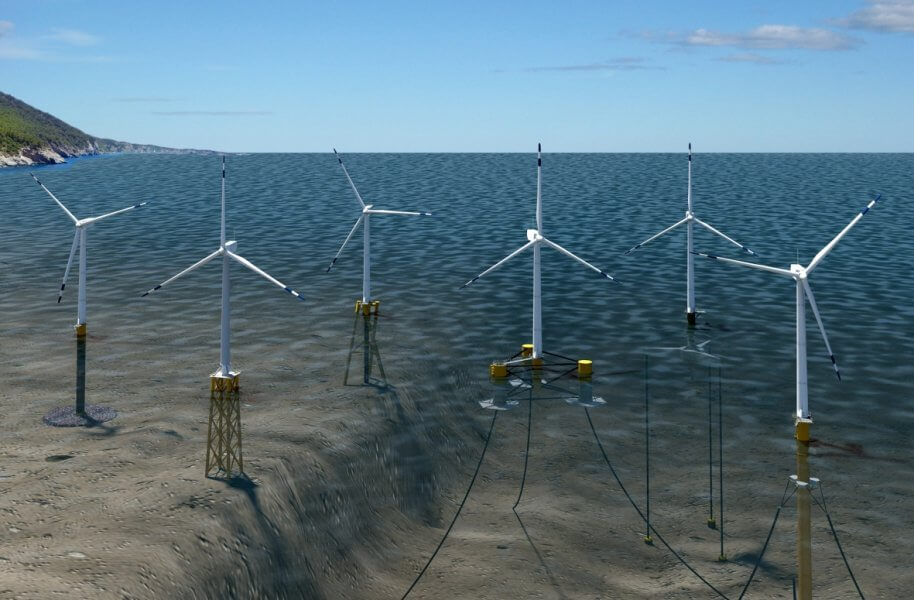
Offshore wind foundation types. From left to right: monoplile, jacket, twisted jacket, tension-leg floating platform, semi-submersible platform, and spar-buoy. Some of these foundations will be discussed below. Illustration by Josh Bauer/NREL
Gravity-Based Foundations
Designed from precast concrete and suitable for sites to depths up to 30 m, gravity-based foundations (GBFs) use gravel, sand or stones for ballast.
Advantages of GBFs
- Uses lower-cost materials like concrete and steel.
- Proven technology borrowed from oil and gas industries.
- Some designs do not need crane installation.
- Tugboats can move port-assembled floated-to-fixed GBFs into place, reducing costs and risk.
Disadvantages of GBFs
- Seabed preparation like dredging is typically required. This can disturb a significant amount (up to 7%) of the wind farm’s site.
- A larger installed footprint may increase the turbine’s environmental impact.
- Invasive species introduction is possible when towing foundations from port to site.
Monopile Foundations
Steel monopile foundations can be used to depths to 40 m. They are a common choice for offshore turbines located in shallow water (less than 35 m).
Advantages of monopiles
- Work well in sand and gravel soils.
- Have a simple design that installs quickly.
- Adaptable for shallow and deeper installations of various sizes.
- Cost-effective for installations to 40 m.
Disadvantages of monopiles
- Cost and risks associated with fabrication, installation and transport increase for larger monopiles required at deeper installations where hydrodynamic loads are an issue.
- Installation noise can disorient, injure or kill marine life sensitive to pressure waves. This includes humpback whales, loggerhead turtles and manatees.
- Wind, wave and seismic loading can negatively affect monopile foundations. This can cause early fatigue damage to the structure if it is not accounted for during installation.
Tripod Foundations
Designed for use to 50 m, tripod foundations have three-legged tripod bases connected to a cylindrical central column below the waterline. Above the waves, it looks like a monopile. These are different from tri-pile foundations (not discussed here) where three individual pile legs connect to a central support tower above the waterline.
Advantages of tripods
- Seabed site doesn’t need advanced preparation before installation.
- Well-suited for locations where stiff clays or medium-to-dense sands are present, and can be used in softer soils, too.
- Become an economical choice for installations at 45 m or more.
- Provides extra stability to the wind turbine.
Disadvantages of tripods
- Scour protection may be needed around the tripod base in locations where bottom currents are significant or where sediment is easily eroded.
- Tripod construction and maintenance costs can be higher than other base types.
Jacket Foundations
Jacket foundations can be installed to depths of 60 m. These lattice-truss structures bear a resemblance to offshore oil platforms with four tubular legs connected by diagonal struts. Rhode Island’s Block Island Wind Farm used jacket foundations.
Advantages of jackets
- Can be installed using piles or suction caissons in stiff clays or medium-to-dense sands. Soft-soil installations are possible with longer pile lengths that significantly increase friction resistance.
- The larger surface area of the lattice configuration may provide an artificial reef location, providing a new habitat for local species.
- Economical choice using straightforward manufacturing methods.
- Can be moved by barge.
Disadvantages of jackets
- May allow invasive species to establish and spread.
- North Sea installations of jacket foundations have reported ongoing grout joint issues, causing long periods of maintenance downtime to sustain structural integrity.
- Changes to local water patterns may be detrimental to native marine ecosystems.
- Installations using pile drivers can create underwater noise that may injure or kill some marine life.
Floating Foundations
Floating technology has already been used successfully in places like Scotland and Portugal, with more European projects in development. But thus far, U.S. development has been limited to pilot projects like the University of Maine’s VolturnUS, which has worked to develop low-cost floating hull technologies to take advantage of Maine’s offshore winds while limiting impact to the state’s fishing and tourist industries. However, projects are now in development on both the East and West Coasts.
Advantages of floating foundations
- Significantly increases the reach of wind farms, allowing installations to over 200 m.
- Takes advantage of the 58% of offshore wind resources in deep water located where traditional foundations cannot reach.
- Turbines and bases can be assembled in port, then towed to site for installation. Longer maintenance can also be done in port, if desired, by towing the turbine back to port.
- Installations further offshore (at least 10 km) minimizes the risk to migratory birds.
- Less visual impact on shore.
Disadvantages of floating foundations
- Cabling to affix the platforms in place requires ongoing inspection and maintenance.
- Anchors and cabling can disrupt sea life.
- Because turbines are towed to site, the possibility of invasive species introduction is increased.
Consider the disadvantages noted above as part of the larger picture — effects are usually limited to areas near the foundation site. Meanwhile, as the world changes to clean energy from fossil fuels, it creates a positive impact on the environment as a whole.
In 2020, offshore wind development research by the U.S. Department of Energy topped $46 million, more than the department’s investment in land wind programs. The industry should consider this investment by the U.S. government as a call to action. The time for offshore wind development in America has come.
Technology writer Marla Keene works for AX Control, an industrial automation parts supplier located in North Carolina. She writes about AR/VR, drones, green tech, artificial intelligence and how technology is changing our world. Her articles have been featured in Power Magazine, Robotics Tomorrow and on other industry sites. Before working for AX Control, Marla spent 12 years running her own small business.
Filed Under: Featured

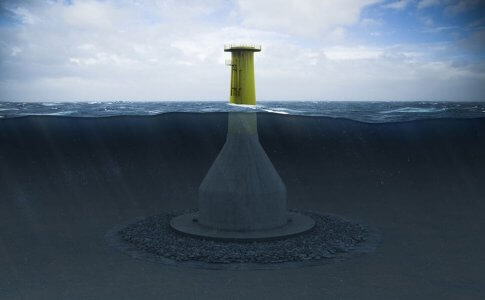


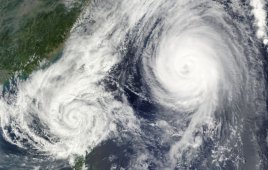
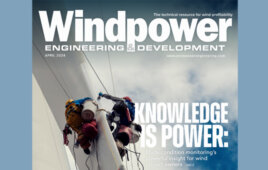
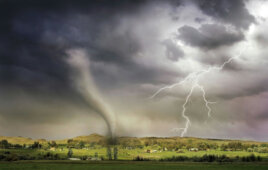
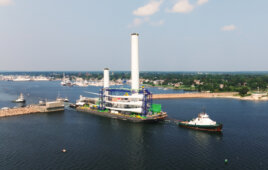
Floating foundations are the obvious choice for California’s offshore wind farm because of the deep water. The added advantage is that the foundations and wind turbines can be assembled onshore and towed to the offshore site. California is committed to have 50 Gw of offshore wind turbines by 2045. That’s a lot of construction jobs.
The article claims that gravity base foundations are “suitable for sites to depths up to 30 m”. This is a weird claim, as they have been used at >300 m. Nowadays, gravity bases are primarily considered for offshore wind farms in 30-70 m water depth, as monopiles rule supreme in shallower waters with <14 MW turbines.
That they haven’t already built US ships only shows they are not serious. There is a way around it if the visit Bermuda before coming back. Or they could just build the hull here and finish it overseas.
They could take a US ship and modify it.
They could build a barge.
Floating solves this as one can build it in port then tow to site, anchor.
And let’s not forget the value of a near shore sited WT that can take advantage of the sea breeze from noon to an hour past sunset?
Places like Florida’s east coast, other shore places is viable because of this valuably timed generation even covering the duck. Texas has a nice group of WTs taking advantage of this on their SE coast
George
To be honest, there’s many pros but lots of cons with the Jones act. I definitely agree that without the Jones act, the U.S would probably suffer from the large amount of maritime jobs lost. However, people in states like Hawaii probably suffer due to the Jones act as it increases costs for local businesses and raises the prices on just about everything.
On another note. We have been a bit slow on wind technology and utilizing it with what we can, but at least solar is going in the right direction.
The author tarnishes this good article by claiming that the Jones Act is nothing but government red tape, a serious obstacle to progress.
Without the Jones Act, the USA would have no shipyards and no maritime industry. It could not build and maintain ships for its Navy and Coast Guard, or for a merchant marine. It would have no crews to operate merchant ships no matter where they are built.
China would be glad to build and operate our ships for us. It would save us some money. I would not be surprised to hear many of our politicians claim that this would be a good idea, because it is what Ronald Reagan would have wanted.
Anyone who disparages the Jones Act but objects to accept foreign control of our military and commercial shipping has no understanding whatsoever of the Jones Act.